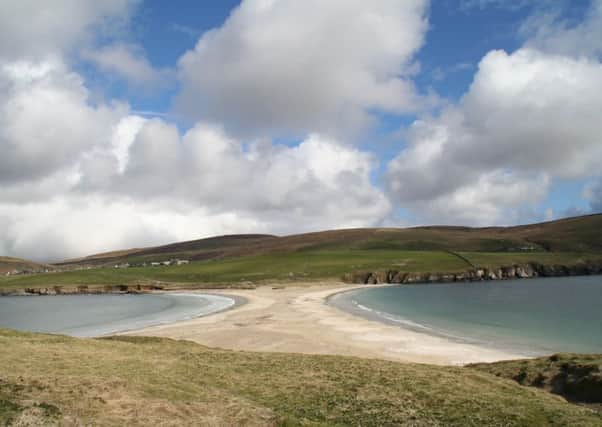New species of wild flower discovered on Shetland Islands


It is the descendant of a non-native species - the yellow monkeyflower (Mimulas guttatus) - which was colonised in the United Kingdom during Victorian Times.
The new plant is referred to by researchers at the University of Stirling as ‘Shetland’s monkeyflower’ and produces yellow flowers with small red spots.
Advertisement
Hide AdAdvertisement
Hide AdIt is larger than the typical monkeyflower and its flowers are more open.
Researchers say the finding is significant as it shows that a major evolutionary step can occur in non-native species over a short period of time, rather than over thousands of years.
Associate Professor Dr Mario Vallejo-Marin, from the University of Stirling, said: “Evolution is often thought to be a slow process taking thousands or millions of years.
“Yet we show that a major evolutionary step can occur in a couple hundred years.”
Researchers carried out tests after a “chance encounter” with the plant while conducting fieldwork near Quarff, Shetland.
They measured the plant’s genome size and surveyed 30 populations of monkeyflowers from Shetland and across the United Kingdom.
The plants were then grown under controlled conditions where their floral and vegetative states were measured to compare the effects of genome duplication in flowering time.
They also carried out genetic analysis to look at the relationship between the new polyploid plant and other flowers in the Shetland Isles.
Advertisement
Hide AdAdvertisement
Hide AdA polyploid plant has more than double the basic number of chromosomes and crops such as potatoes, tobacco and coffee are polyploids.
Genome duplication is common in the evolutionary history of flowering plants but it is rare to witness such a phenomenon in recent years
The researchers said that young polyploids, such as the new plant, provide an opportunity to investigate the early stages of an important evolutionary process.
Dr Vallejo-Marin added: “The fact that the new polyploid involves a non-native plant is poignant, given the fact that human activities are transporting all sorts of animal and plant species well beyond their native habitats.
“This raises the possibility that non-native species may increasingly participate in major biological processes, including the formation of new types pf plants and animals.
“We found that genome duplication has immediate effects on the morphology and life strategy of this plant.
“Plants with double the DNA in their cells produce larger flowers, larger leaves, thicker stems, but they also take longer to flower.
“Although these type of changes are predicted by theory, demonstrating them is complicated as in older polyploids the parental species may be missing or may have evolved since the separation of the polyploid and non-polyploid lineages.”
